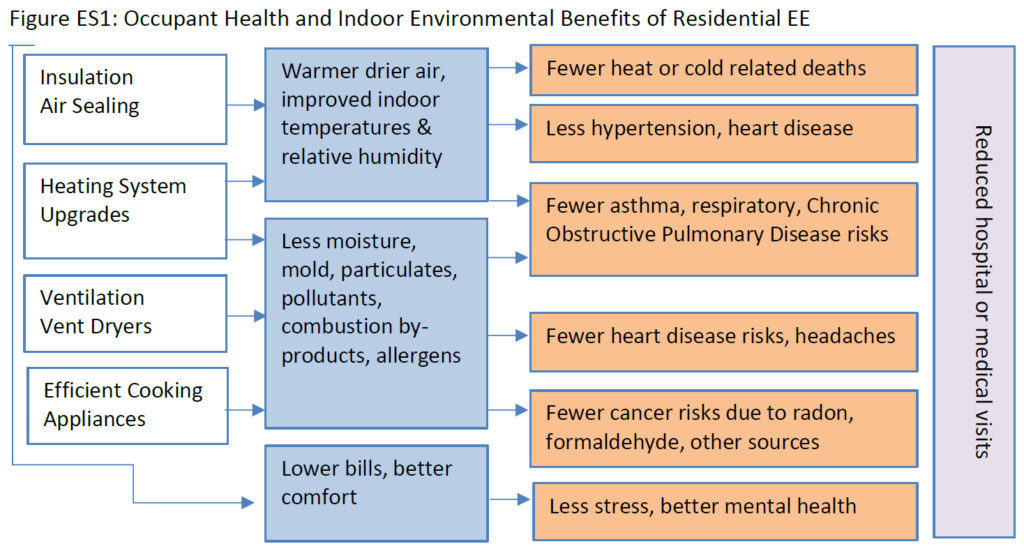How energy efficiency can lower statewide health expenses
New Health Impacts Study
The Health Impacts of Avoiding Power Plant Pollution with
Energy Efficiency
 A new study by the American Council for an Energy Efficiency Economy (ACEEE) and Physicians for Social Responsibility found that reducing energy consumption in the United States by just 15% could have enormous annual impacts on our public health.
A new study by the American Council for an Energy Efficiency Economy (ACEEE) and Physicians for Social Responsibility found that reducing energy consumption in the United States by just 15% could have enormous annual impacts on our public health.
HARTFORD, CT – A 15% reduction in energy use could reduce health impacts by $73 per capita annually. 15th highest in the nation among large metro areas.
Reducing Energy Use Leads to Better Health
Energy efficiency provides a pathway to positive health outcomes
It is estimated that 40% of diagnosed asthma is associated with home exposures such as moisture, temperatures variations, and pests.
Energy efficiency and weatherization aim to improve these conditions, which in turn lead to better health outcomes for residents. A 2014 study found a 12% decrease in emergency department asthma-related visits and a 48%
decline in poor health among adults who received home weatherization services.
Putting EE First Literally Saves Lives
30% of CT housing stock has health and safety issues which are identified as part of an Energy Efficiency assessment. Mold , Asbestos, High Co, and Gas leaks are uncovered daily by Connecticut Building Performance scientists during routine inspections.

EE Prevents 4 Largest Health Killers
“The health benefits available from energy efficiency are impressive. Air pollution from power plants contributes to the four leading causes of death in the U.S.: cancer, chronic lower respiratory diseases, heart disease, and stroke. We can use energy efficiency to save lives and help slow global warming. Those benefits are going to be felt now and for decades into the
future.”
– Barbara Gottlieb, Director for environment and health at Physicians for Social Responsibility
Save Energy Save Lives – EFA Flyer
Saving Energy, Saving Lives Report by ACEEE and PSR



